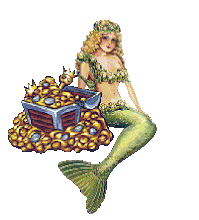When I was a restaurant manager, we had a formula for pricing meals:
Cost of your product divided by 35% = menu price
or
$8.50 ÷ .35= $24.29
That formula keeps your cost at 35%. So, following that formula, suppose I want to sell a beautifully decorated plaque? There are lovely aluminum 8" x 10" aluminum plaques made by Unisub, called ChromaLuxe plaques. They are richly coated with the dye sublimation poly and the images are spectacular. Here's one:
Now, the 8"x10" version of that plaque is only $4.50. Add in shipping, say 50 cents, then look at what getting the image involves:
Is this a photo that you take or one that is provided? Add in cost of film, plus your photographer's fee. If they provided the photo, if it is a studio shot, it would be unethical and illegal to reproduce it. If it's s homegrown snap, do you have to scan and edit it or download it from a jump drive, email or whatever? Then there will be time spent sizing and cleaning up the shot, maybe adding text or borders, possibly blowing it up to fit the desired plaque. Add in your time spent doing that. If resizing is involved, you may need special software, so add in for that.
I once had my aunt give me a 20 year old 3"x5" cracked and faded Mardi Gras Ball photo. She had carried it in her wallet forever. She wanted it on a 8"x10" aluminum plaque. Using PhotoShop Elements, I was able to blow it up and do some color correcting, filling in the cracks with nearby colors. You have to work with the layers, as dye sublimation is so detailed, added coloring can be spotted on a finished item like a 3D illusion. I was pretty satisfied with my result and I stopped there. When the plaque was printed, I was a little disappointed with the less than sharp faces and other small defects. This was a gift for my aunt and she was thrilled, but next time I will use a software program called Genuine Fractals, by OnOne. The investment of $150 for that software will be well worth it, as it makes resizing a breeze. It requires you have PhotoShop, but it also works with Elements. So, am I justified in adding a little to my cost in terms of the cost and use of my software and time?
When you are ready to make the plaque, consider what else you may need. The instructions call for protective paper and ProSpray, which is a spray fixative. So, these two items add a small amount to the cost, plus the cost of your sublimation paper, which is about 14 cents a sheet.
Ink cost is a little hard to figure but using my Ricoh GX7000 and paying $110 per ink cartridge, using four, at 68ml each, brings me to the sublimation expert I rely on, David Gross, who, as the genius behind Conde Systems sets a rule of thumb for the Ricoh printers and SubliJet-R sublimation ink, at one penny per square inch. 8x10 = 80 cents for my creation.
So, to recap, Here's what we've got so far:
$5.00 for the plaque
.80 for the ink
.14 for the paper used
1.00 miscellaneous
______
$6.94 total cost
÷ .35
_______
19.82 amount to charge
Now, herein lies the rub, these plaques are especially worthy of that $20 price tag, they are breathtakingly lovely, but will the market bear that pricing? Probably not at the flea market, on ebay or online. A nice gallery uptown could sell artist reproductions for that easily, but my family and friends, and the folks in my area would count that as too high. That's when a sliding scale makes more sense. In most cases, doubling the cost works for my products. So I would probably sell it for $15, adding $5 if there are special artwork requirements.
The main point of the exercise is to figure what is involved in cost. If I had a brick and mortar store, and employees, I would have to add in for them as well. If I ever become a famous artist or photographer, I can add that in, too. If you want one, better order quick, before the price rises with my fame.


